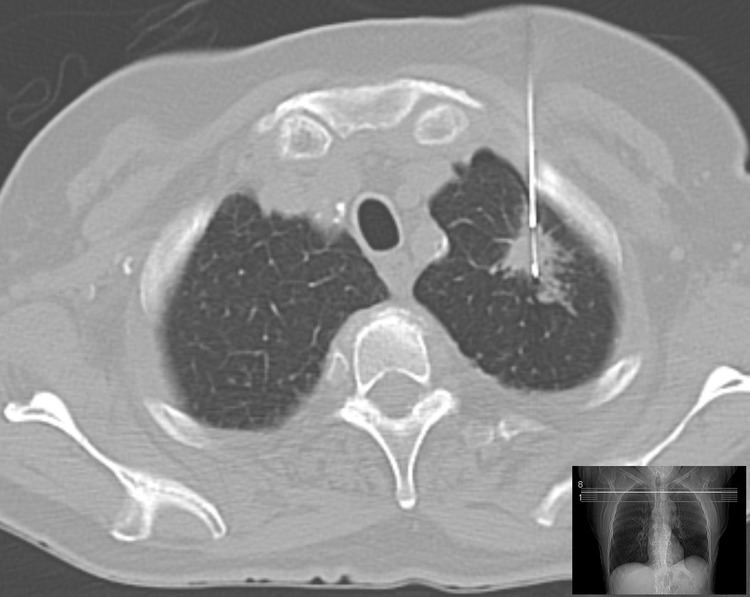 | ||
A lung biopsy is an interventional procedure performed to diagnose lung pathology by obtaining a small piece of lung which is examined under a microscope. Beyond microscopic examination for cellular morphology and architecture, special stains and cultures can be performed on the tissue obtained.
Contents
A lung biopsy can be performed percutaneously, or via bronchoscopy via ultrasound guidance.
Reasons to perform
A lung biopsy is performed when a lung lesion is suspicious for lung cancer, or when cancer cannot be distinguished from another disease, such as aspergillosis.
Lung biopsy also plays a role in the diagnosis of interstitial lung disease.
Pneumothorax
Any approach to lung biopsy risks causing a pneumothorax. Careful technique can limit this risk, which ranges from less than 1% to about 10%. The precise risk of pneumothorax depends on technique and on underlying lung disease, as certain lung diseases such as COPD can increase the risk of pneumothorax. Pneumothorax sometimes requires tube thoracostomy.
Bleeding
Bleeding can be life-threateneing and can occur in 1 to 4%.
